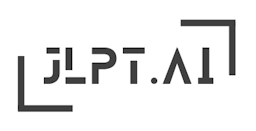

N2
音読み:gyaku
訓読み:saka, gyaku
ギャクgyaku
さかsaka
ぎゃくgyaku
Reverse, opposite
Imagine a person walking in the wrong direction and suddenly facing a sign that says '逆' meaning 'reverse' or 'opposite'. The person has to turn around and go in the opposite direction.
The kanji '逆' is frequently encountered in JLPT materials, especially at the N2 level. Its meaning and usage in various compound words make it important for reading comprehension and vocabulary sections of the exam.
彼は逆方向に歩いている。
He is walking in the opposite direction.
かれはぎゃくほうこうにあるいている。
kare wa gyaku houkou ni aruite iru.
逆さまになって落ちてしまった。
It turned upside down and fell.
さかさまになっておちてしまった。
sakasama ni natte ochite shimatta.
彼の考え方は逆だ。
His way of thinking is the opposite.
かれのかんがえかたはぎゃくだ。
kare no kangae kata wa gyaku da.